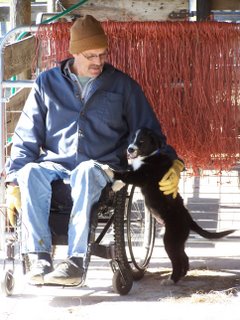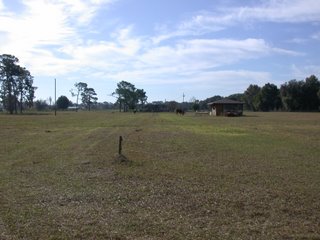 This 11-week-old English Shepard pup moved in with us on Sunday. The goal is to train him into a general-purpose farm dog that can herd sheep when necessary.
This 11-week-old English Shepard pup moved in with us on Sunday. The goal is to train him into a general-purpose farm dog that can herd sheep when necessary.The name “Pepper” was chosen after we got him home and was not even suggested before that. I told my bride quite sometime before we got him that I thought I’d call him “Bubba”.
She said that it was going to be my dog and I could give him any name I wanted to, but that I didn’t want to name him Bubba. Then she gave me that look that means, “Drop it or I’ll have to hurt you”. So much for the name Bubba.
I considered trying to come up with a name that played off of how the dog looked. I also considered coming up with a name that had something to do with his job as a farm dog.
He is a black dog with a little white, like salt and pepper. But Pepper is the name of the Ben Johnson character in the John Wayne movie “Chisum”. The Pepper character is the trail boss/ranch foreman.
Way back in the mid 70’s my dad and his business partner ran about 3000 sheep open range style on a bunch of leased coal company land in Southern Ohio. This was done with horses, several 19 and 20 year old kids, and one very well trained Border Collie.
I was one of the 19 year old kids, and that dog was better than wonderful in that situation but it needed full time work or it would go crazy. In my opinion Border Collies are just like that, they can’t be really happy with out a full time job.
We met some women that raise English Shepard’s at one of the Meat Sheep Alliance meetings a few years ago. That breed seemed like the a calmed down Boarder Collie, able to cope with herding and other farm chores but also able to cope with snoozing on my office floor while I play computer geek.
We made a deal with the breeders some time ago for a pup, and this is it; Pepper.

